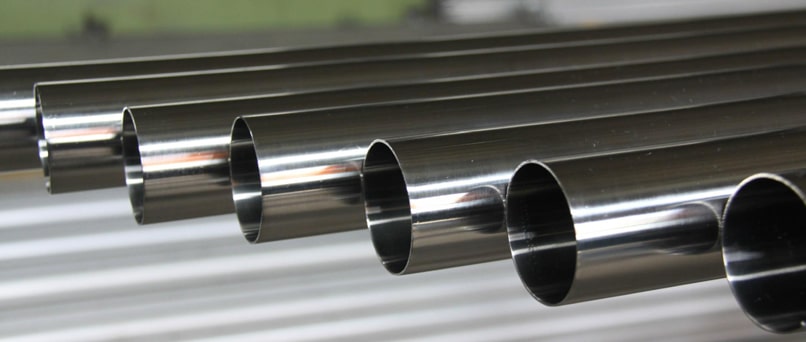Stainless Steel 321 is titanium settled austenitic stainless steel with greater general corrosion resistance. It has phenomenal resistance to intergranular corrosion after the presentation to temperatures in the chromium carbide precipitation scope of 800–1500 degrees F (427–816 degrees C).
The SS maintains oxidation to 1500 degrees F (816 degrees C) and has higher creep and stress rupture properties than SS 304 and 304L. It also maintains good low-temperature toughness.
Stainless Steel 321H is the higher carbon (0.04–0.10) version of SS 321. It was produced to improve creep resistance and for higher strength at temperatures above 1000 degrees F (537 degrees C). In most occurrences, the carbon content of the plate enables dual certification.
SS 321 cannot be hardened by heat treatment, just by cold working. It can be effectively welded and processed by standard shop fabrication practices.
Characteristics of SS 321/321H
- Oxidation resistant to 1600 degrees F
- Stabilized against weld heat-affected zone (HAZ) intergranular corrosion
- Resists polythionic acid stress corrosion cracking
Applications of SS 321/321H
- Aircraft piston engine manifolds and exhaust stacks
- Expansion joints
- Thermal oxidizers
- Refinery equipment
- High-temperature chemical process equipment
- Food Processing equipment and storage
Corrosion Resistance
Stainless Steel 321 Pipes shows good general corrosion resistance that is similar to 304. It was created for use in the chromium carbide precipitation scope by 1800–1500 degrees F (427–816 degrees C) where un-stabilized alloys for example 304 are subject to intergranular attack. The alloy can be utilized in most diluted organic acids at moderate temperatures and in pure phosphoric acid at lower temperatures and up to 10% diluted solutions at high temperatures. Stainless Steel 321 Tubes opposes polythionic acid stress corrosion cracking in hydrocarbon service. It can also be used in chloride or fluoride-free caustic solutions at moderate temperatures. SS 321 does not perform well in chloride solutions, even in small concentrations, or in sulfuric acid service.
Machining
304 Stainless Steel is not tougher than 321 stainless steel, this material will produce the same tough stringy chips. To work-harden; slow speeds and heavy feeds will minimize this alloy’s tendency.
Welding & Annealing Techniques
321 Stainless steel is promptly welded by all common techniques, including submerged arc. Suitable weld fillers are most frequently specified as AWS E/ER 347 or E/ER 321. This alloy is mostly considered to have comparable weldability to 304 and 304L stainless with the prime difference being the titanium addition which removes or prevents carbide precipitation during welding.
Annealing at 1800-2000 degrees F (928-1093 degrees C) air cool. This process will result in maximum ductility. For maximum corrosion resistance, see the note on settled anneal under corrosion. This Stainless Steel doesn’t harden by heat treating. High properties may only be obtained through cold reduction.
Hot Working & Cold Working Techniques
Working temperatures of 2100-2300 degrees F (1149-1260 degrees C) are suggested for forging, upsetting and another hot work process. Don’t work this Stainless Steel at temperatures beneath 1700 degrees F (927 degrees C). The material must be water quenched or completely annealed after working to retain maximum corrosion resistance.
In spite of the fact that this material requires higher initial forces than 304 stainless steel, it is slightly tough and ductile and can be easily stamped, blanked, spun and drawn.

